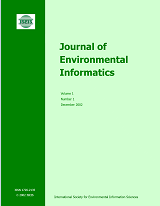doi:10.3808/jei.202400510
Copyright © 2024 ISEIS. All rights reserved
Water Quality Prediction Based on an Innovated Physical and Data Driving Hybrid Model at Basin Scale
Abstract
The prediction of basin water quality has become an urgent need for water environment management, where water pollution is on the increase. Currently, physical models are primarily used for water quality predictions, but the models are not adaptable for the automatic future prediction of watershed water quality owing to their non-automatic boundary setting. The development of big data, which has led to artificial intelligence (AI) technology, has remedied the deficiency of physical models and has been widely used in water quality prediction. However, the accuracy of AI models depends only on the quantity and quality of dataset, which is applied on specific and discrete sections with enough data and difficult to extend to regions with limited monitoring data. Thus, we constructed migration and distribution gates to express the spatial influence of different variables from different sections on the water quality of a specific and discrete section. The temporal processes were expressed by degradation equation. The migration gate, distribution gate and degradation equations were incorporated into Long Short-Term Memory Network (LSTM) to improve the operation mechanism of the LSTM algorithm to create the Im-LSTM model, which considers both the temporal influence of a specific section and the spatial influence of other sections on a specific section at basin scale. Compared to ANN, LSTM, Im-LSTM showed the best performance for basin water quality prediction, especially for mainstream sections at sudden pollution process. Thus, the proposed Im-LSTM provides a new approach for water environment supervision.
Keywords: long term, water quality prediction, physical equations, long short-term memory network, hybrid model
Supplementary Files:
Refbacks
- There are currently no refbacks.
